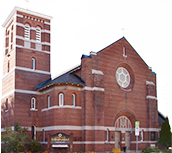Missa Orbis Factor in Lent
by Wesley R. Warren, Organist and Choirmaster
Written anonymously sometime between the 14th and 16th centuries, this mass setting has traditionally been appointed for Sundays in Ordinary Time throughout the year. It was particularly popular in Roman Catholic parishes before the Second Vatican Council, rivalling Missa de angelis. At St. Barnabas, we sing it as a congregational setting during Lent.
It is called Missa Orbis Factor (Lord, Creator of the World) because extra words used sometimes to be inserted in the Kyrie section between “Kyrie” and “eleison”, fitting the syllables to the flow of notes. The musical term for such a textual insertion is a “trope”. Tropes to the liturgy took three forms: 1) the insertion and addition of newly composed music (called melismas); 2) the setting of text to pre-existing music (as might be the case here); and 3) the interpolation of new music and text within established plainsongs. Tropes provided a new way for medieval composers to express their creative energies, and to add solemnity to particular feast days and seasons of the liturgical calendar.
Missa Orbis Factor is written in the first mode. The composer makes much use of repetition to unify the musical material in the setting, making it easier to learn for congregational purposes. All of the melodies exhibit a graceful curve and beauty that serves as a wonderful vehicle for the projection of the words.

